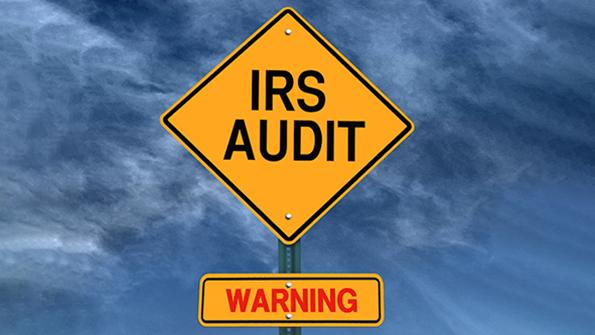
For years, FAA inspectors have liked to jokingly say, “I am with the FAA, and I am here to help you.” The Internal Revenue Service (IRS), however, does not say “I am here to help you”—and they do not joke.
In February, the IRS issued a press release titled "IRS begins audits of corporate jet usage; part of the larger effort to ensure high-income groups don’t fly under the radar on tax responsibilities.” The IRS went on to say that it plans to begin dozens of audits on business aircraft involving personal use. The audits will be focused on aircraft usage by large corporations, large partnerships and high-income taxpayers. It also will focus on whether for tax purposes the use of jets is being properly allocated between business and personal reasons.
Preparation is the key to surviving a tax audit and receiving a “no change” letter acknowledging that your tax returns were proper. Aircraft operators know the FAA does not believe that an inspection occurred unless the paperwork proves it. The IRS will not believe that you use your aircraft for business unless the paperwork proves it. Do you have documents that show the business purpose of every person in every seat on every leg of every trip? That is what the IRS expects. And the IRS expects the records to be contemporaneous, not pulled together a year or more later by the harried flight department after the CFO informs them that an audit is underway.
The flight department can provide a great deal of help to the CFO in maintaining up-to-date records to prove the business purpose of every person in every seat on every leg of every trip, because the flight department knows the who, when and where of each flight. But the flight department’s knowledge of who flew does not always mean they know the business purpose of why they flew. The company executives must either give the flight department adequate guidance on the business purpose of each person on each trip, or someone in the C-suite must complete that information in the flight records separately as the flights occur.
And of course, there will always be some non-business flights. If someone is not on business, do your records distinguish between an employee entertainment trip (a Colorado ski trip, for example) and a personal trip (like a Mayo Clinic appointment)? The employee will need to have fringe benefit income added to his or her W-2 for either trip, but the company will only lose deductions for the entertainment trip.
The IRS statement makes it clear that this audit campaign will be focused on personal use. But the big win for the IRS is not just to impute some additional income to executives—it is to attack corporate aircraft deductions that should have been reduced based on entertainment use of the aircraft.
The IRS says: “For someone such as an executive using the company jet for personal travel, the amount of personal usage impacts eligibility for certain business deductions. Use of the company jet for personal travel typically results in income inclusion by the individual using the jet for personal travel and could also impact the business’s eligibility to deduct costs related to the personal travel.”
When the IRS hints at “the business’s eligibility to deduct costs,” it is talking about the IRC § 274 entertainment deduction disallowance rules. These rules are complicated, and in fact, if the executives want to know what the effect of a particular entertainment trip in June will be, you cannot give them an answer until the end of the year, because you have to know how the year’s usage played out.
Although the calculations are complex, the lesson is simple: butts in seats.
When the IRS set out to attack entertainment use of corporate aircraft 20 years ago, it made a simple observation. Too many flight departments restrict the roster of employees who can use the aircraft for business, and yet they do not limit the number of guests of executives on entertainment flights. The result is too many entertainment butts and not enough business butts.
The IRS approach to looking at seat use rather than merely comparing flight hours is deadly to companies that never let anyone but the CEO and guests on the aircraft. What companies need to realize is that the IRS seat approach is virtually harmless to companies that use aircraft to shuttle any and all employees. This is because the number of business butts in seats dominates the calculation, leaving the IRS little room to disallow deductions for entertainment use of the aircraft by the owners, officers and directors.
The best way to prepare for these IRS audits is to make sure that your flight department is tracking all the necessary flight details in real time—and to watch the trends and report them to management. In other words, if you see entertainment use rising, give management an opportunity to schedule more business flights with more business people in the seats.
No audit is fun, but if your company is ready, the auditor will leave and look for a less-prepared victim.





